Shoho Michael Newhall is a prolific artist—but he’s unlikely to describe himself in those terms. Instead, he’s merely “making stuff” while serving as resident teacher and chief priest at Jikoji Zen Center in Los Gatos, California, a small Soto Zen community of about 12 residents and staff, along with a sangha of approximately 150 members.
Newhall, 71, creates two- and three-dimensional images in a wide array of styles and mediums—from complex, colorful, multilayered scenes unconstrained by the external world to representational works of incredible realism. He has been making art since he was a teenager, and completed a master’s degree in fine arts at the Art Institute of Chicago in 1982, where he later taught. He has also mounted more than a dozen solo exhibitions across five states and participated in numerous group exhibitions.
Below, Newhall speaks to Tricycle about the “nonview” that directs his artwork and more.
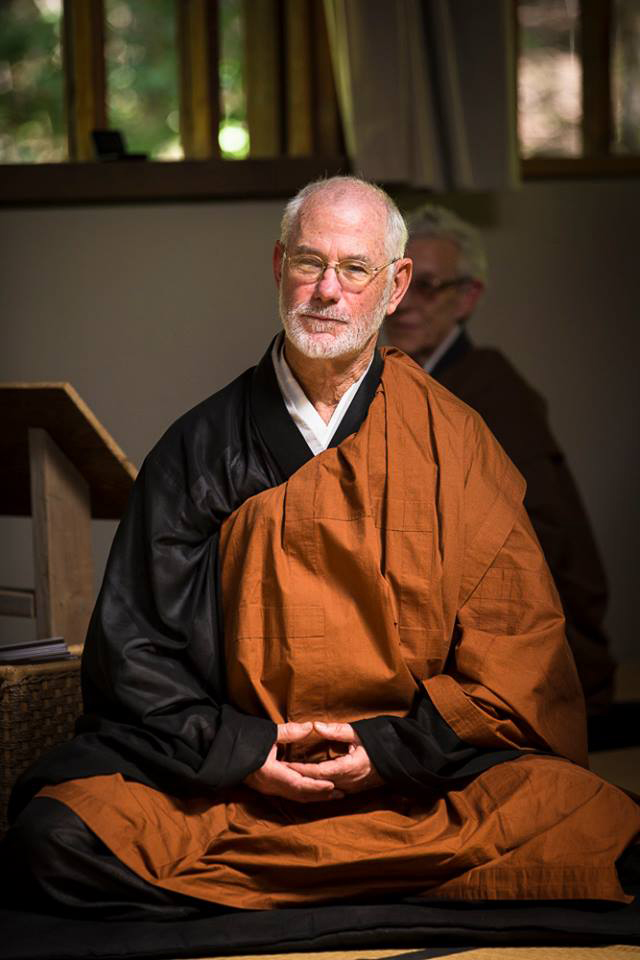
What label do you assign to yourself first: “artist” or “Zen practitioner”? Those are my only two choices? [Laughs.] I don’t think I can clearly answer that. “Zen practitioner” is kind of a strange term to me—I’m a Buddhist, that’s all, and one who happens to be actively practicing. And I do a lot of Buddhist study outside of Zen.
So perhaps a better way to put it is: which journey did you embark on first? I guess you can say I’ve always been an artist. I grew up intending to be one, and my father, sister, and grandfather were artists as well. I never really made it to New York, but ended up teaching in the Midwest quite a bit at various art schools and universities. So that was the beginning of my self-identity as an artist.
I got involved in practice independently without a formal teacher, initially with an organic farmer in central Wisconsin when my philosophical reading was drifting East. I went to Naropa University when it opened in 1974 and studied with Chögyam Trungpa Rinpoche. I met my teacher Kobun Chino Roshi there, as well as Jack Kornfield and Joseph Goldstein. So I pretty much had the three yanas [spiritual vehicles] covered—a sampling of all three traditions. I developed a student-teacher relationship with Kubin Chino when I was still going to graduate school and teaching.
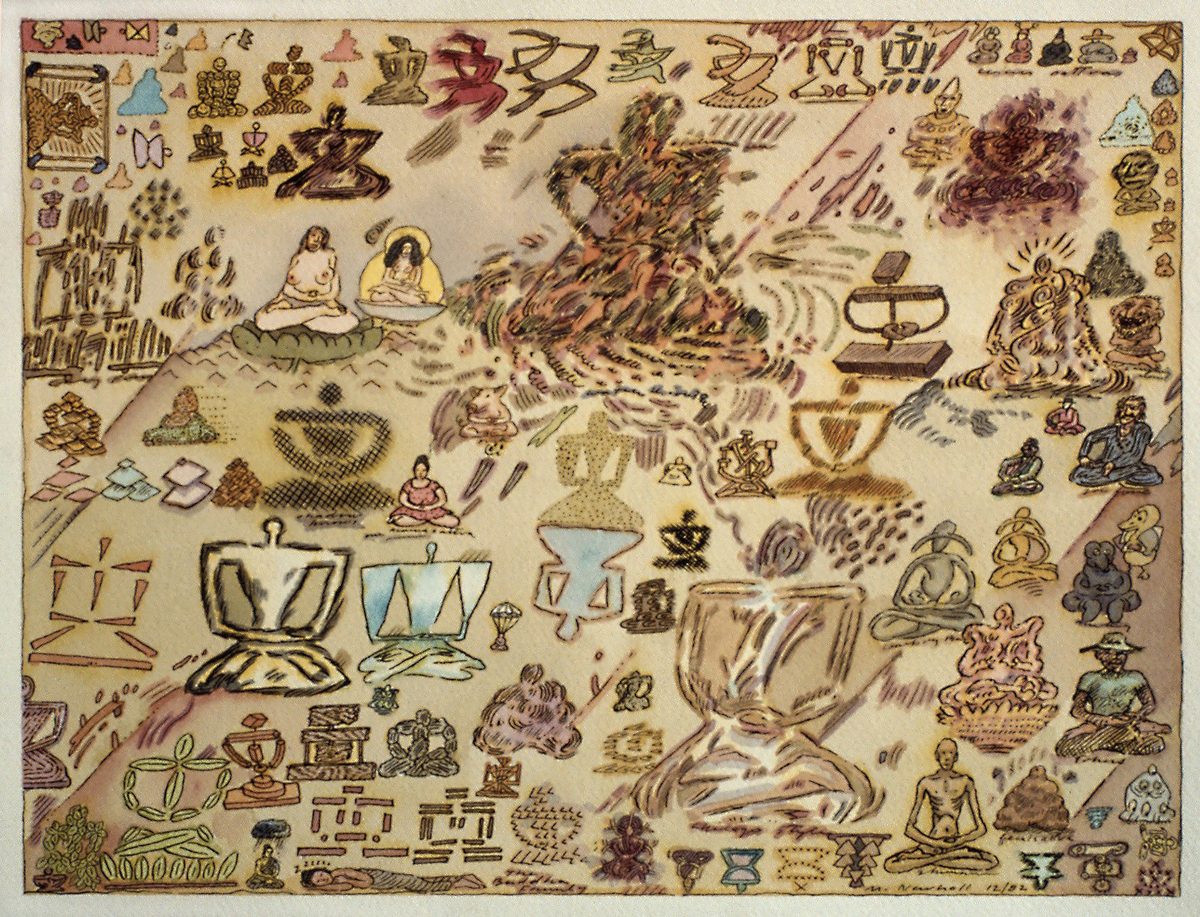
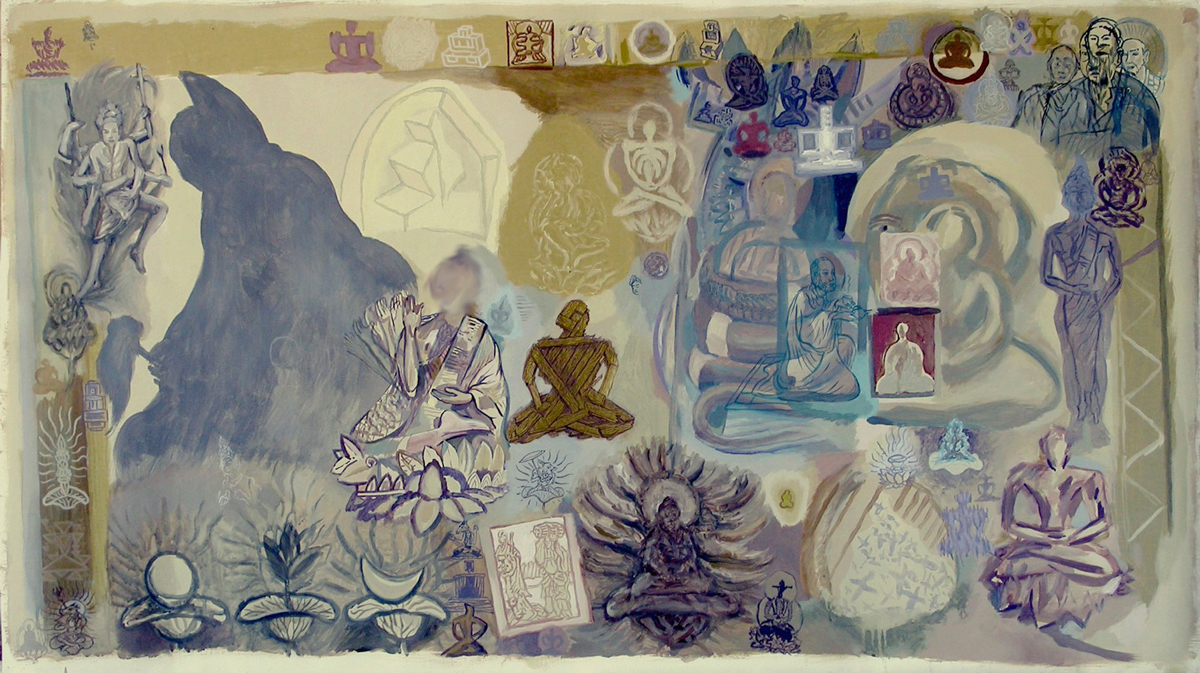
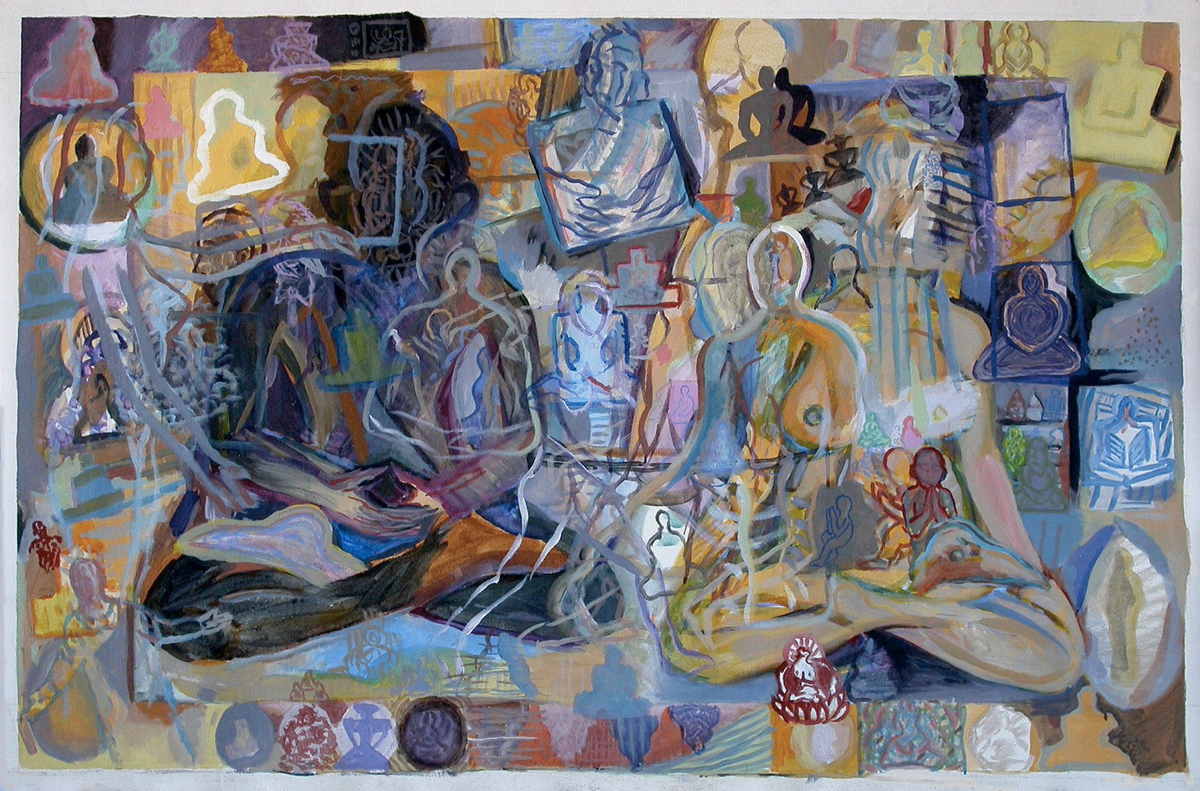
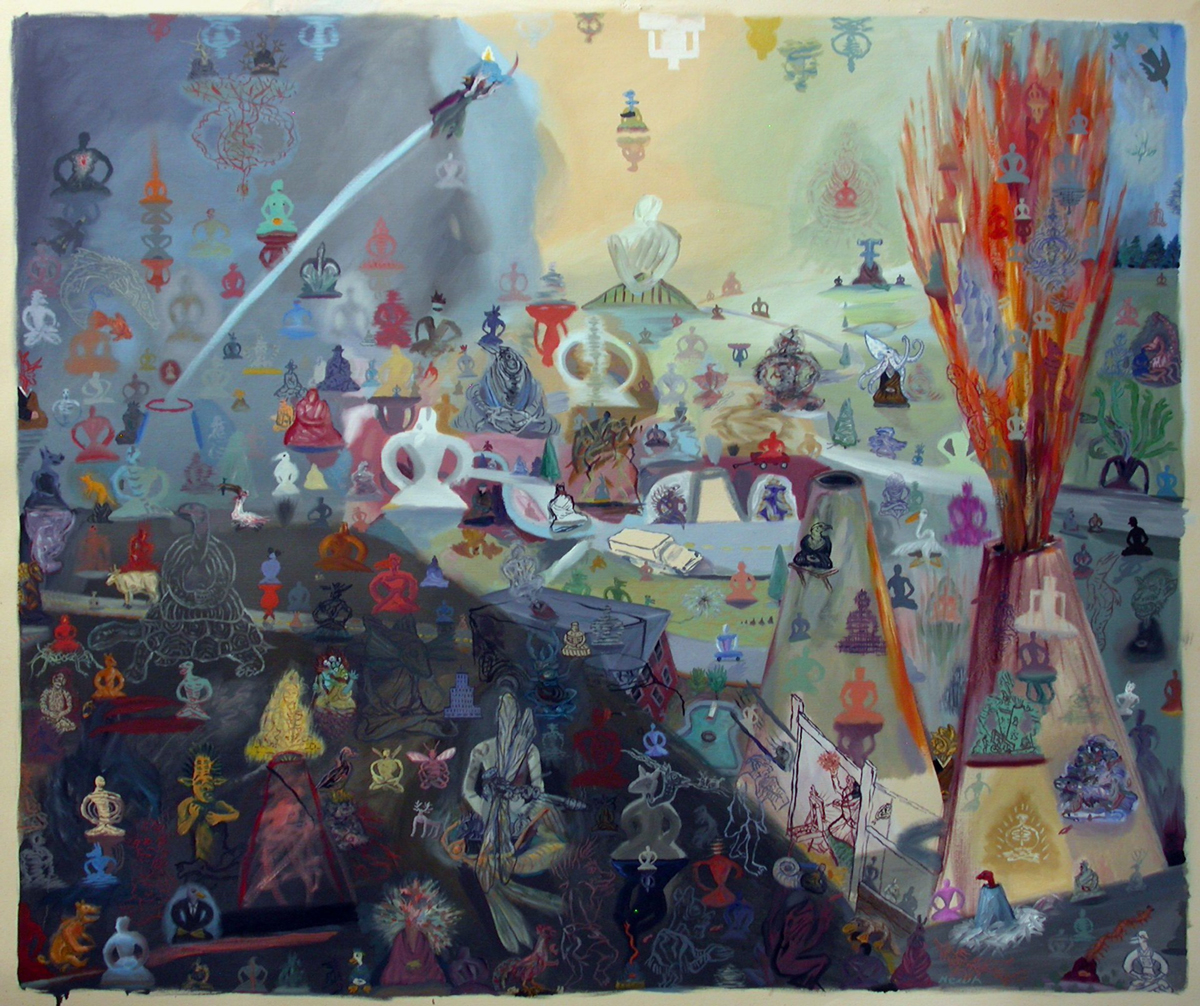
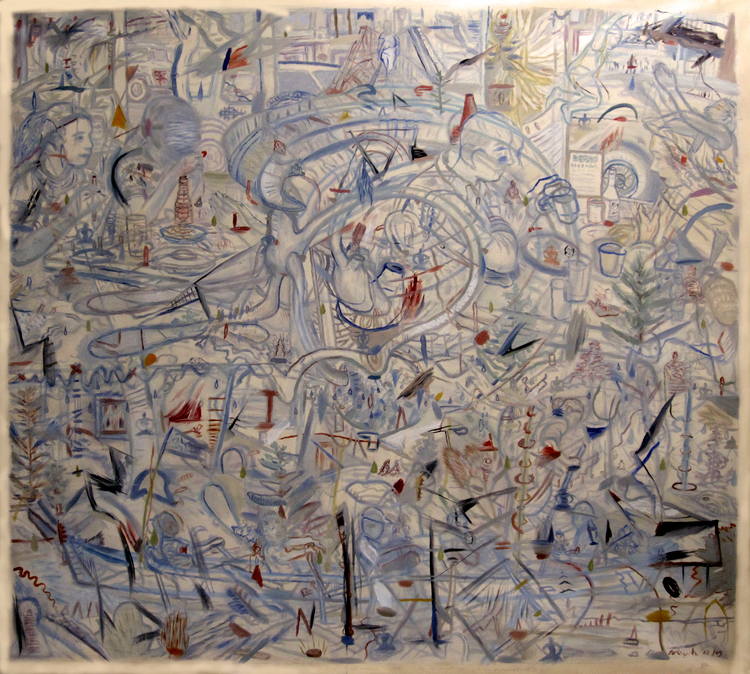
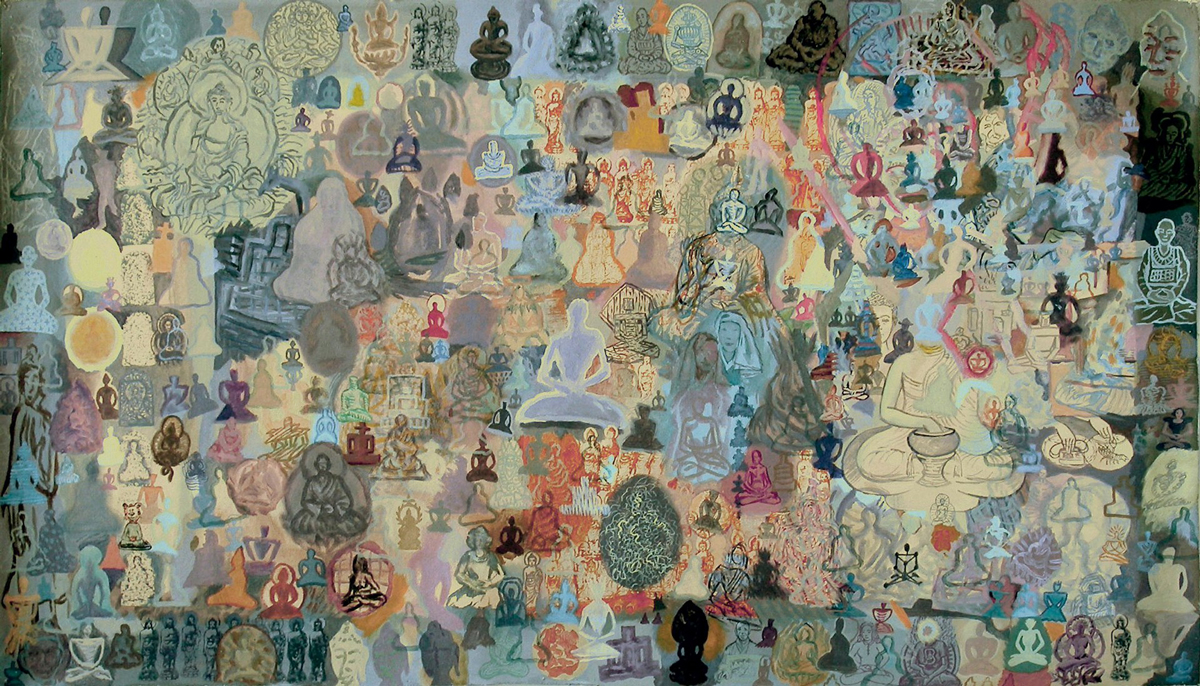
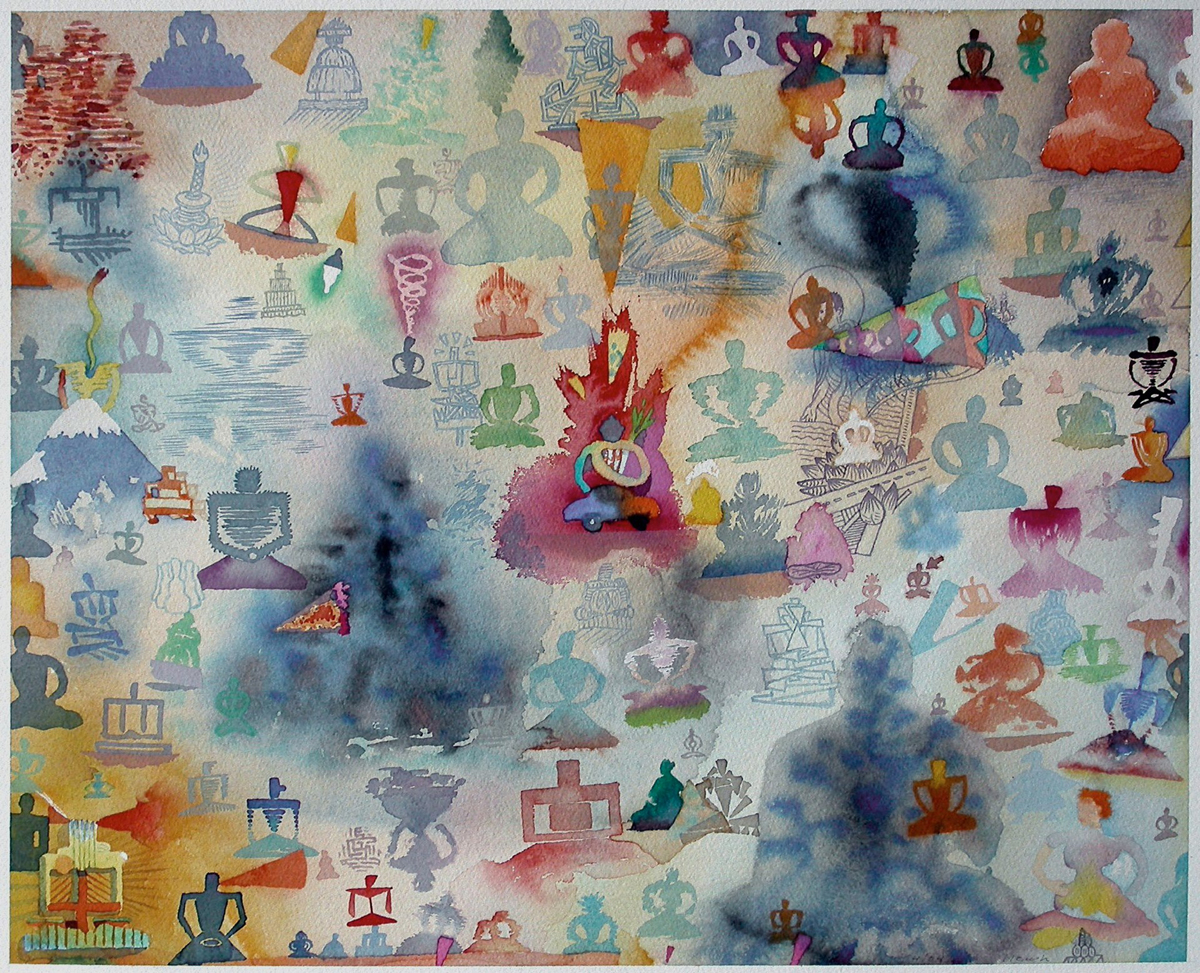
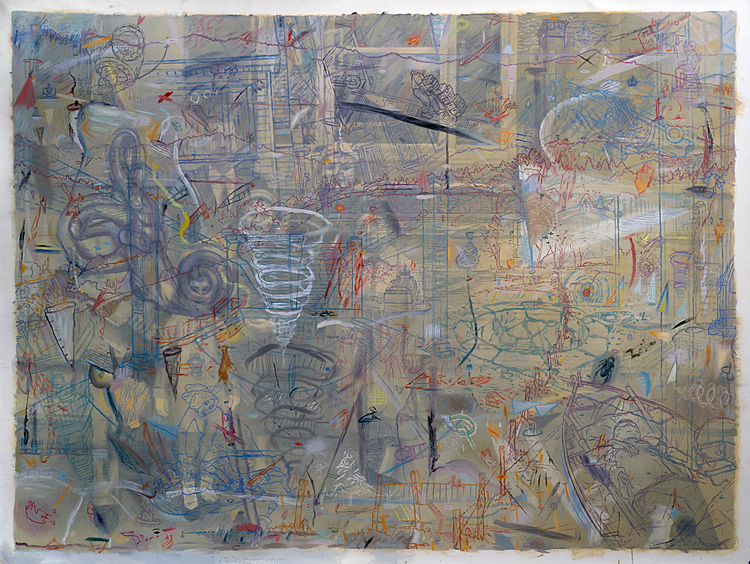
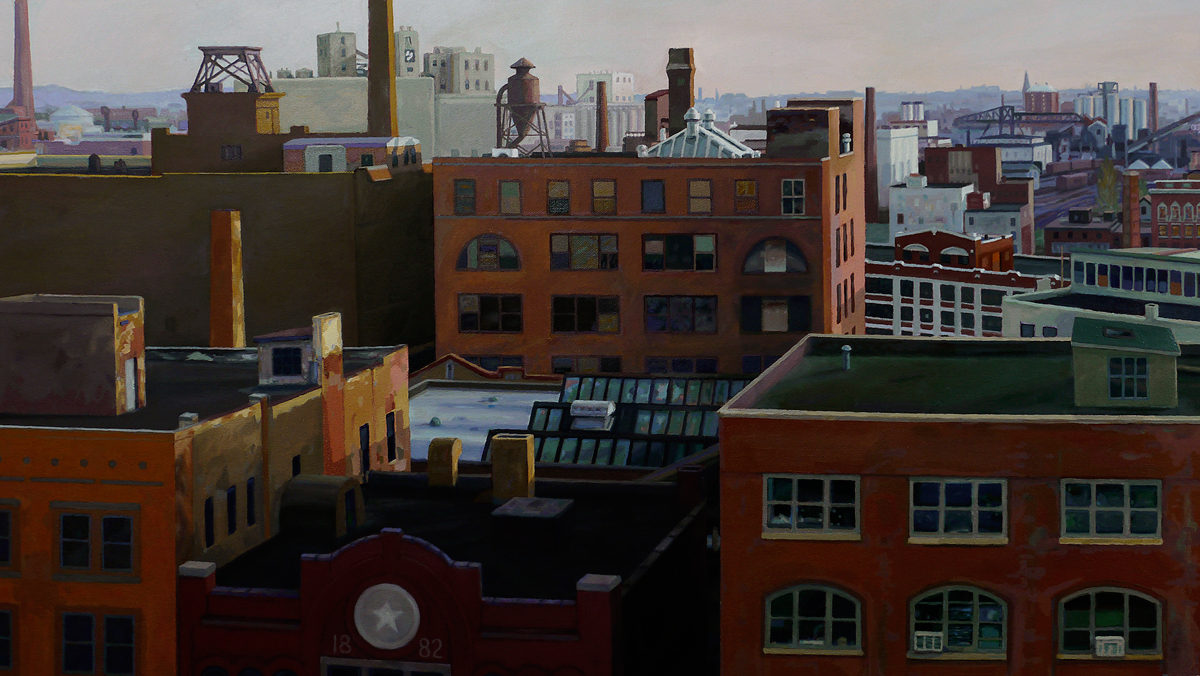
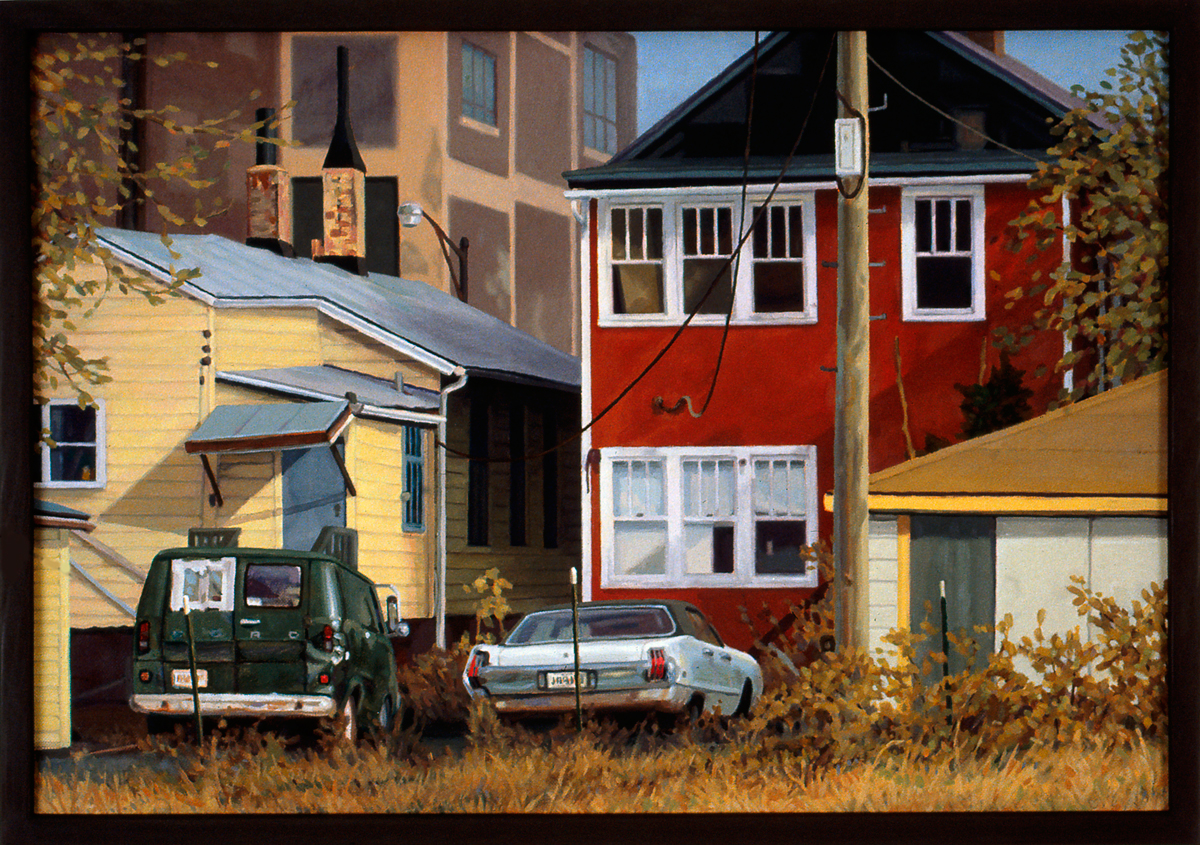
Do you still have time to create art while running a Zen center? Oh, yeah. I have a studio space here at the Zen center, and I’m active. Actually, I just had the first two one-person shows I’ve had in about 15 years, one in Milwaukee and one in Half Moon Bay, California, so I’m kind of waking up from sleep. I’ve always had trouble getting out there and talking about my art.
Do you find that your spiritual practice hinders your ability to self-promote? Well, my spiritual practice takes up some of my time, and it also makes me less inclined to sell myself as an aesthetic product. At the moment, things are running themselves pretty well at the Zen center, so I have much more time to work, but there have been periods when that side of me has been compromised by my practice life.
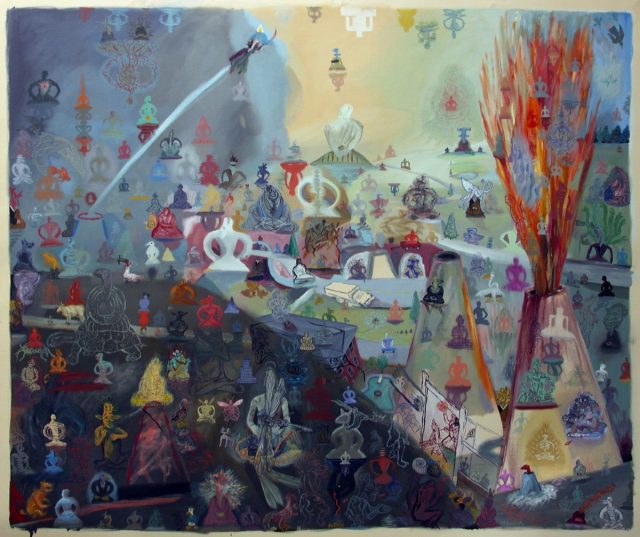
I’m very curious about your series “Buddhafields.” Is there any anxiety in painting a Buddha, representing something that is meant to be perfect? No . . . but perhaps I should have trembled a bit to make an image of the Buddha. I know the early Buddhists didn’t depict the Buddha, and instead showed an empty seed or his footprints or something. I kind of like that.
I don’t really see the “Buddhafields” as having any ritual basis. I see the icon of someone sitting, whether it’s ritualized or done in a light-hearted way, as one expression of receiving the Buddha’s recommendation to sit down and be still. The image doesn’t necessarily convey any power or any special energy beyond simply being a reminder of that.
Is there a sense of community in those “Buddhafields”? Is it also homage to the sangha? I think you’re right.
When I was doing “Paper Face Sets”—a series of heads on rice paper—I thought of them as self-portraits on one level, and on another I thought I was compiling the sangha. Every one of those heads was a self-portrait of me as a Buddhist monk, and concurrently, none of them are me. They are the people I want to sit with, the people I want to enjoy the dharma with.
Have you taken the time to compare your older work to your newer, and to consider how your spiritual development has influenced your artwork? In other words, at this point, do I have a more expanded vision? To be honest, I might see something like that in retrospect, but these kinds of thoughts are never in the foreground of my mind. I’m just making stuff.
When I’m making art, I often feel like one of those bag boys in a grocery store who carry groceries out to someone’s car. I have no idea what’s in the bag; I don’t really care! I just want to take the bag from A to B. At any rate, when an observer says, “Oh, I’m seeing this in your painting” or “I’m making this connection,” I’m like, “Oh, wow, great, tell me more!” I don’t really interpret my work that much; I don’t have time. And I don’t have that kind of mindset. I don’t see making art as a vehicle for any kind of specific cultivation, either mental or spiritual. I don’t employ art in any particular way like that.
When you were younger and in a very conservative art institute, how did you accept the conventions taught there? I do a lot of representational painting and drawing—very conventional and academic stuff. For a long time I specialized in figure drawing and figure painting, and I even do some plein air [outdoor] painting. I set up a French easel, and I go out and paint landscapes. It’s really wonderful! It’s like therapy.
Are you saying art is a therapeutic process? By therapeutic process I mean that when I’m working on something that is not just direct representation, I am working more closely with the composition—how images relate to one another and how space and color are used. Involved in all that are formal choices that have to do with my view of what art is or what I’m seeing to be an aesthetic. Aesthetic is not the right word . . . some kind of vision, goal, or aspiration. That’s not the case when I work representationally.
When I was at the Art Institute I heard a really interesting lecture by [contemporary artist] Chuck Close. He was talking about removing his personal identity and his ideas about art from the process to instead get into the mechanics, the convention of carrying that package from the grocery store to the car. That made a big impression on me.
I later realized why I like to work representationally—there is a kind of purity in it. You are only observing, not necessarily trying to make something beautiful—you are just trying to represent what you see and what you get out of the process. So it’s therapeutic in the sense that I didn’t have to make any aesthetic choices or think about composition and placement.

Do you prefer to take your identity out of your work? How does “The Excavation Set” capture this approach? I just make these things; I don’t have a clear analytical reason for why I do it. I don’t necessarily feel like they are personal expressions; they are quite impersonal in a way. It’s like when you’re on a street corner in a relatively secure spot. People are moving around you, and you can simply scan from left to right. Your eye naturally reads the collective multiplicity of forms, of color, of shapes, of expression, of life.
So I wouldn’t say the impetus to create comes from trying to express myself or trying to express a view. It’s actually an expression of a nonview or a nonfixed view.The Sanskrit term paratantra, conditioned existence, means the multiplicity of things. It’s just how the world is. It’s wonderful in its diversity, so why not take a scan, put more than one thing in my artwork, and discover how that one thing relates to another thing? I don’t know how they are going to relate until I do it, and then if it feels like they’re doing well together, I let them be, and the painting evolves that way.